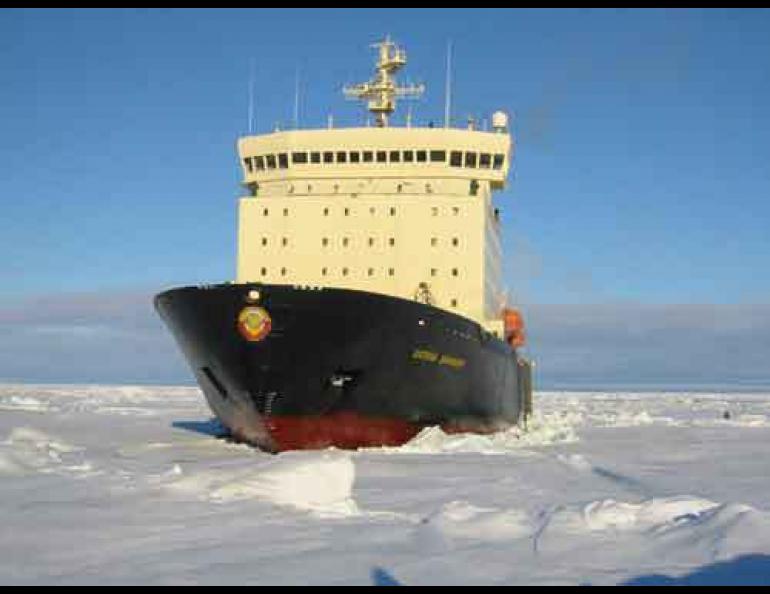
Warm Atlantic water heads north
Late last summer, Igor Dmitrenko and a few other scientists returned to Alaska from the top of the world with information about an immense pulse of warm water that had entered the Arctic Ocean. The scientists believe the warm stream of Atlantic water visiting the Arctic might affect the entire planet.
Dmitrenko, a Russian oceanographer working in Alaska as a visiting scientist at the University of Alaska's International Arctic Research Center, was aboard a Russian icebreaker in September 2004. One of his tasks was to retrieve information from instruments anchored in the vast Arctic Ocean. The moorings, tethered to a plastic-coated metal line as thin as a pencil, record the temperature of ocean water at different depths as well as the water's salinity and ocean currents.
One of those instruments, located north of the Laptev Sea a few hundred miles off the coast of Siberia and about 150 meters (492 feet) below the ocean surface, recorded a jump in water temperature of 0.4 degrees Celsius on a February day as a column of warm water flooded past the instrument.
A rise in water temperature from 0.4 to 0.8 degrees Celsius (32.7 to 33.4 degrees Fahrenheit) is a big change in the stable environment of the Arctic Ocean, said Dmitrenko's colleague, Igor Polyakov, who also works at the International Arctic Research Center in Fairbanks.
"It's as if the planet became warmer in a single day," Polyakov said.
Interested in the pulse of warm water, Polyakov contacted oceanographers from around the world to backtrack the water on its path to the high Arctic. Norwegian scientists have moored stations in the Norwegian Sea, and German scientists monitor stations in Fram Strait, between Greenland and Svalbard. Using information from those stations and others, Polyakov and his coworkers found that the warm water passed Norway in 1998 and took about six years to reach the mooring station north of the Laptev Sea. That warmer water now resides in the Arctic Ocean, where it will remain for years caught up in currents that swirl counterclockwise in several giant basins north of the world's landmasses.
The warm, salty Atlantic water lies beneath fresher, colder water that touches sea ice. The ice remains over the North Pole all summer and grows to reach northern coasts in winter. The buffer of colder water insulates the ice, but Polyakov said the persistence of Atlantic water may cause some sea ice to melt.
"Small portions of the Atlantic water heat may produce a lot of work over a long time span," he said.
The warming of the Arctic Ocean has happened before, in a pattern that scientists call multidecadal variability. Since Norwegian explorer Fridtjof Nansen first recorded Arctic Ocean temperatures in the late 1800s, the temperature of the Arctic Ocean has been higher than average during two periods: from the 1920s to about the 1950s, and from the early 1980s to the present. A concern with a possible extended warm period in the Arctic Ocean is that melting ice might pump more fresh water into the world's oceans, which might slow down the global thermohaline circulation. That ocean circulation pattern affects weather patterns worldwide.
"Maybe this is a feature of global warming, but maybe not," Polyakov said of the presence of warm Atlantic water in the Arctic Ocean. "We should think about what's causing this, but it's just as important to monitor it."
This summer, International Arctic Research Center scientists will again board the Russian icebreaker to deploy seven new moorings in the Arctic Ocean that will help track the warm Atlantic water and the changes it might carry north.





